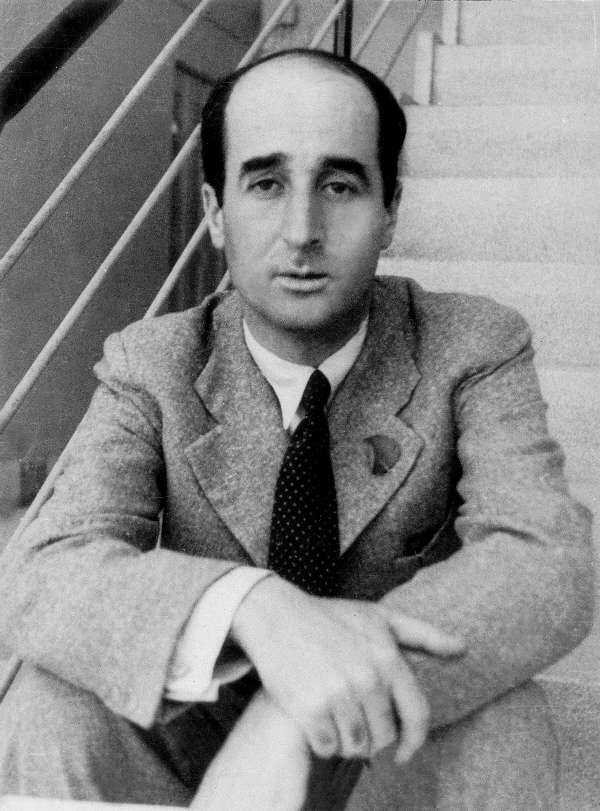Wolpe and Feldman—together again in rewarding NYNME program

Stefan Wolpe’s Quartet and “From Here on Farther” were performed Monday night by New York New Music Ensemble.
From the first notes of Monday night’s New York New Music Ensemble concert, a bittersweet pang of nostalgia fell over the small gallery space at the Tenri Center. There was an overflow crowd to hear music from Stefan Wolpe and Morton Feldman in the overheated space. It was a reminder of the era when modernism ruled the arts in New York City, when the economic endurance contest of living here was not yet so onerous that composers like Wolpe and Feldman, and the music they and their colleagues made, were able to be a prominent part of the intellectual life of the city.
Wolpe was in the center. Though never the more prominent composer, he was an excellent one, and an indispensable teacher to, among others, Feldman. His music can almost serve as a biographical definition of modernism: it belongs, clearly, to the classical tradition, but has no identifiers of any particular school, style, or even era. It is modern and ancient at once, with the feeling of expressionism but abstracted through the objective means of Stravinsky and Webern.
NYNME opened and closed the concert with two of Wolpe’s pieces, his late (1969) From Here on Farther—a quartet for violin, clarinet, bass clarinet and piano—and Piece (commonly known as “Quartet”) for Oboe, Cello, Percussion and Piano, from 1954. The instrumentation is typical for the composer, who wrote for idiosyncratic ensembles, yet never did anything for mere effect or eccentricity.
Farther is a concentrated piece he was able to write after medication eased his Parkinson’s sufficiently to work with paper and pencil. The music lingers between tonality and non-systematized atonality; the composer was fond of using relatively wide intervals, and the result is instrumental lines that serve as both melodies and contrapuntal accompaniment. Structurally, he used polyphony to develop a constant dialogue between players. The sound is surprising and consistently attractive, complex but not dense, and so finely made that neither the ear nor the mind are overwhelmed. As stream-of-consciousness as the surface may sound, the music is always shaped, with intention and direction.
The playing was expert (as it was for the entire concert), the textures transparent and Wolpe’s sophisticated polyrhythms played with such clarity that all one heard was a fluid pulse inside an exact tempo. Bass clarinetist Ben Fingland and clarinetist Rane Moore negotiated their broad intervals with ease. The part for the violinist—Linda Quan—is like a hummingbird circling the music, with subtle gestures towards L’Histoire du Soldat, and Quan and the clarinetists played the middle section with a wonderful, subtle dance feeling. Stephen Gosling was the pianist for the evening, playing in every piece—he is a linchpin of the new music scene, technically proficient, musical, able to play with muscular sensitivity.
Gosling’s skills were particularly apparent in the Quartet, one of the finest chamber pieces of the past century. The oboist—Stuart Breczinski—is the primary voice, but there is so much constant interplay: response, support, counterpoint, extension, that this is truly an ensemble piece. The music is active but never in a hurry, constantly building structures out of nothing that then dissolve into something new. Through the four sections, there is a sensation of ongoing transformation in the romantic sense. There is not one wasted note, even when the musicians sing, or when Gosling stood up to clap his hands and stomp his feet as part of the rhythmic flow. Wolpe’s Quartet is intellectually rich and musically dazzling.
The musicians—including cellist Chris Finckel and percussionist Daniel Druckman—were magnificent: alive, excited, exact, working together to solve what was clearly to them a fascinating puzzle. This was an essential performance of a work that is strong on paper and on record, but stunning when heard live.
Inside the Wolpe pieces were Feldman’s Why Patterns? (1978) and Extensions 1 (1951). In a year that has brought the composer’s String Quartet No. 2 and For Philip Guston, Why Patterns? was a refreshing reminder of how Feldman went from being an avant-garde composer of graphic scores one working with strict notation, firmly at the leading edge of the long classical tradition.
Flutist Emi Ferguson joined Gosling and Druckman for the first, long piece. Feldman made the music with three independent parts that only come together in strict synchronization in the last moments. The musicians are like three painters who share the same canvas, work independently, then concur on the masterpiece they have created. The playing was beautiful: Ferguson produced a full, dark sound on all her instruments (including alto and bass flute), Druckman conveyed a sense of stimulating foreboding through his repeated glockenspiel notes, and Gosling articulated Feldman’s extraordinarily subtle rhythmic variations with astonishing clarity.
Quan and Gosling played the duo, Extension 1, with a quick, but unhurried, pace. Their mental and technical acuity and agility were terrific. In one of Feldman’s densest pieces, it sounded like they were picking notes out from the middle of long, legato phrases.
The New York New Music Ensemble plays music of Kaija Saariaho at Scandavia House on March 5, 2015. nynme.org






Posted Dec 18, 2014 at 9:50 am by Austin Clarkson
Thanks to George Grella for his penetrating and richly observed review of the Wolpe-Feldman concert. He notes the particular era from which these composers emerged and which their music transcended. The passage on the Oboe Quartet captures deftly Wolpe’s ‘mutability’ aesthetic, that transformation is a life obligation, “modern and ancient at once”.
Austin Clarkson, Stefan Wolpe Society